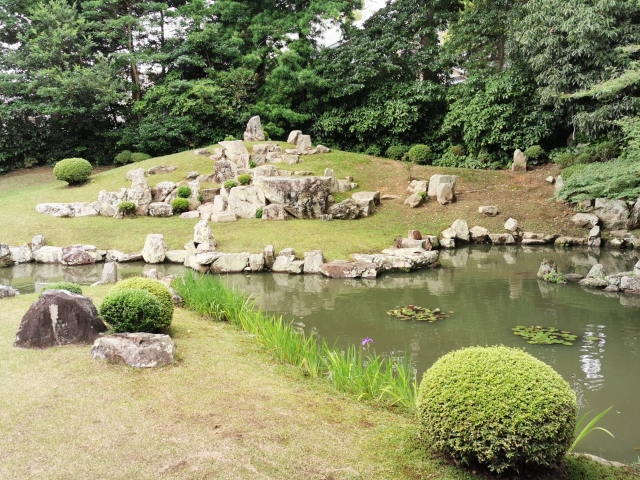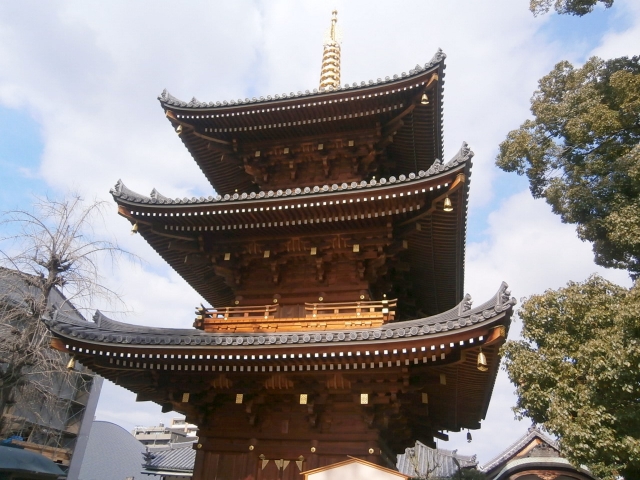Three schools of thought have influenced Japanese gardens. The third influential thought is Buddhism. Buddhism was founded by the Buddha between the 4th and 6th centuries B.C. and came to Japan around the 6th century. The influence of Buddhism on Japan was so great that many Japanese gardens have designs of Buddhist origin.

The photo shows the Japanese garden, which is said to be inspired by the Buddhist worldview of a microcosm. In the Buddhist worldview, there is a high mountain called Mount Sumeru, which rises at the center of the world. Seven layers of mountains surround this mountain, with seven seas between the mountains, and the outermost sea is surrounded by Mount Tetsuenzan. The nine mountains and eight oceans surrounding Mount Sumeru are called the Nine Mountains and Eight Oceans. The stone at the top of the mountain represents Mount Sumeru. The many stones in the middle of the mountain represent the nine mountains and eight seas.
Japanese gardens incorporate the Buddhist worldview, and are filled with wishes for peace, salvation, and happiness in the world. Throughout its long history, Japanese gardens have reflected the circumstances of their times. In every age, ideologies have changed, but they have always depicted an ideal world in which people prayed for happiness.


